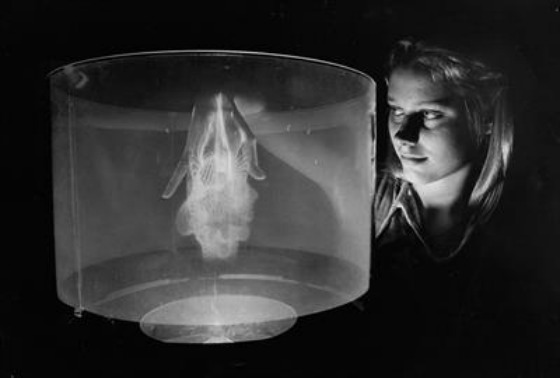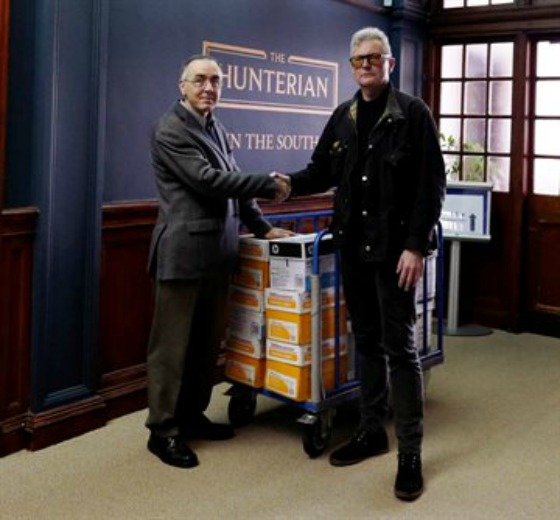An increasingly-important archive of the mysterious world of holograms has been given a huge boost with the award of a £6,000 Royal Photographic Society bursary.

One of the world’s first ‘Cylindrical Holograms’, part of the DMU archive
The award will go towards taking on a new PhD researcher who will organise, document and digitise the holographic archive at De Montfort University Leicester (DMU).
The archive aims to preserve the history of the still-mysterious art and to make it easily available to inspire the next generations of researchers, creators and innovators.
Gathered and curated by Martin Richardson, Professor of Modern Holography in the Leicester Media School at DMU, the archive is becoming a collection of global importance.
Prof Richardson said: “The digitisation of the archive is a means of preserving, safeguarding and making accessible to scholars, researchers and the public, documents which would otherwise be lost in time.
“The actual holograms will be photographed and filmed and dated to provide a context that charts the evolution of holography.
“I want De Montfort University to become a global leader in this field.”
A blog about the process will be started with monthly updates to create awareness and development of this resource. The blog will also allow for a discussion forum on the practice of holography to provide useful information.
A large archive of research materials gathered by Professor Sean Johnston, a physicist and historian of holography at the University of Glasgow, was recently donated by him to the DMU collection.

It included correspondence and interview recordings with hundreds of seminal figures in the field such as Emmett Leith at the University of Michigan and Yuri Denisyuk of the Vavilov Institute in St Petersburg.
Prof Johnston’s archive also contained reminiscences, photographs, exhibition catalogues, unpublished documents and holograms from holographic artists, engineers, scientists, business people, enthusiasts and collectors.
“The aim of adding the University of Glasgow archive collection to our own makes the information accessible to a far wider global audience,” Prof Richardson added.
“To have such a unique resource in one location will inspire a new generation to study and research this extraordinary media in our Leicester Media School.”
Some of the DMU collection is already available on DVD - a real attraction for research students, curators, heritage managers and teachers - and the aim is to completely digitise the collection for a complementary website.
Prof Richardson is a world-renowned specialist and was awarded the Royal Photographic Society Saxby Medal for his work in the science.
His own illustrious career was launched when he completed the world’s first PhD in Holographic Imaging and he is now first supervisor to six full-time PhD research students at DMU and second supervisor to two others.
His archive carefully preserves art and commercial holograms from pioneering businesses that have come and gone.
Holograms were first conceived by Dennis Gabor in 1947 and collections that preserve the science’s history are rare.
Almost all holograms are still in the hands of their creators, many of them now retired and it is expensive to pull them together into one place. As a result, the history of the subject is threatened with disappearance.
Prof Johnston said: “I’ve been approached by many holographers in industry, engineering and art seeking a permanent home for their life’s work, and I’ve recommended building a critical mass by merging collections.”
Posted on Tuesday 20 December 2016